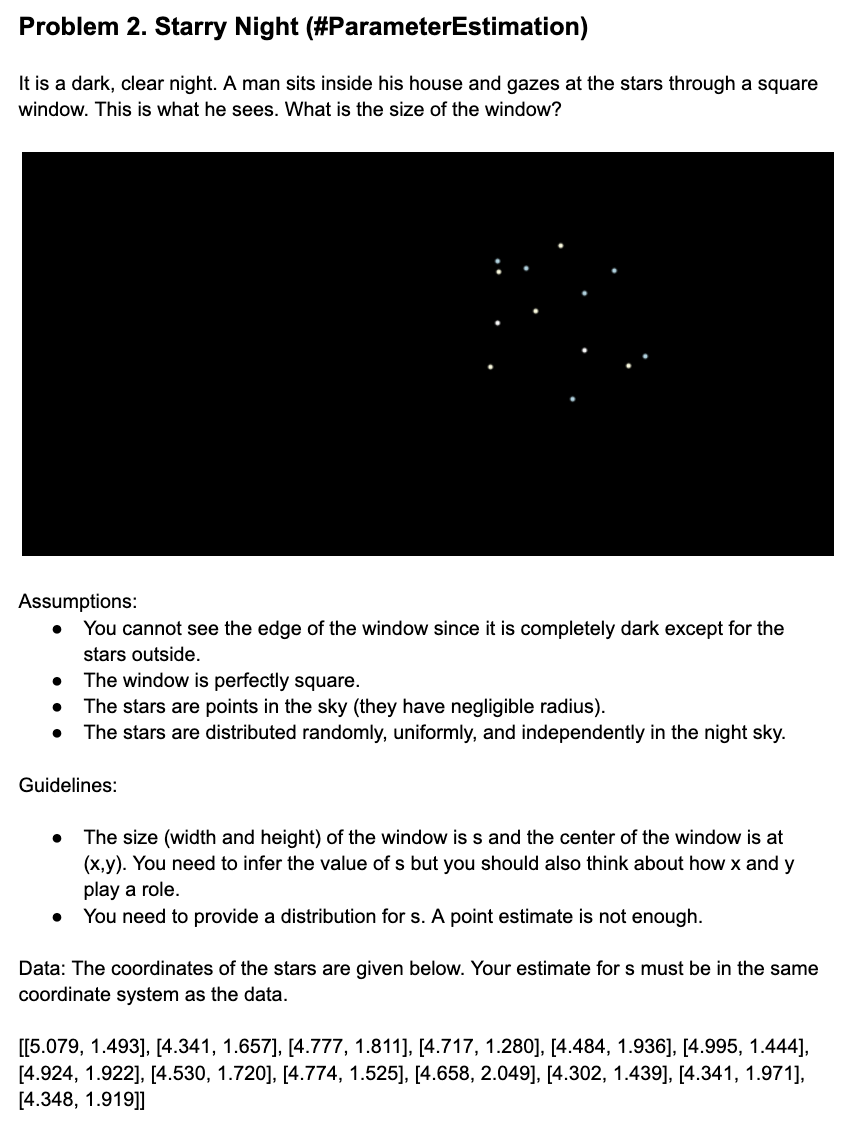Home /
Expert Answers /
Statistics and Probability /
problem-2-starry-night-parameterestimation-it-is-a-dark-clear-night-a-man-sits-inside-his-h-pa309
(Solved): Problem 2. Starry Night (\#ParameterEstimation) It is a dark, clear night. A man sits inside his h ...
Problem 2. Starry Night (\#ParameterEstimation) It is a dark, clear night. A man sits inside his house and gazes at the stars through a square window. This is what he sees. What is the size of the window? Assumptions: - You cannot see the edge of the window since it is completely dark except for the stars outside. - The window is perfectly square. - The stars are points in the sky (they have negligible radius). - The stars are distributed randomly, uniformly, and independently in the night sky. Guidelines: - The size (width and height) of the window is and the center of the window is at . You need to infer the value of but you should also think about how and play a role. - You need to provide a distribution for . A point estimate is not enough. Data: The coordinates of the stars are given below. Your estimate for s must be in the same coordinate system as the data. [[5.079, 1.493], [4.341, 1.657], [4.777, 1.811], [4.717, 1.280], [4.484, 1.936], [4.995, 1.444], [4.924, 1.922], [4.530, 1.720], [4.774, 1.525], [4.658, 2.049], [4.302, 1.439], [4.341, 1.971],
Expert Answer
To estimate the size of the square window, we need to make some assumptions and use statistical inference. Let's assume that the stars are uniformly and independently distributed in the night sky, and that their coordinates represent a random sample from this distribution.We can start by calculating the distance between each pair of stars in the sample, and then calculate the average distance. The distance between two points (x1, y1) and (x2, y2) in a Cartesian coordinate system is given by the formula: where "sqrt" is the square root function.We can then use this average distance to estimate the size of the window. Let's denote the size of the window by "s". We can use the fact that the distance between any two points inside a square is at most the length of the diagonal of the square (which is sqrt(2)*s), to obtain an upper bound on s. Therefore, we can set:s <= d_avg / sqrt(2)where d_avg is the average distance between the stars in the sample.
